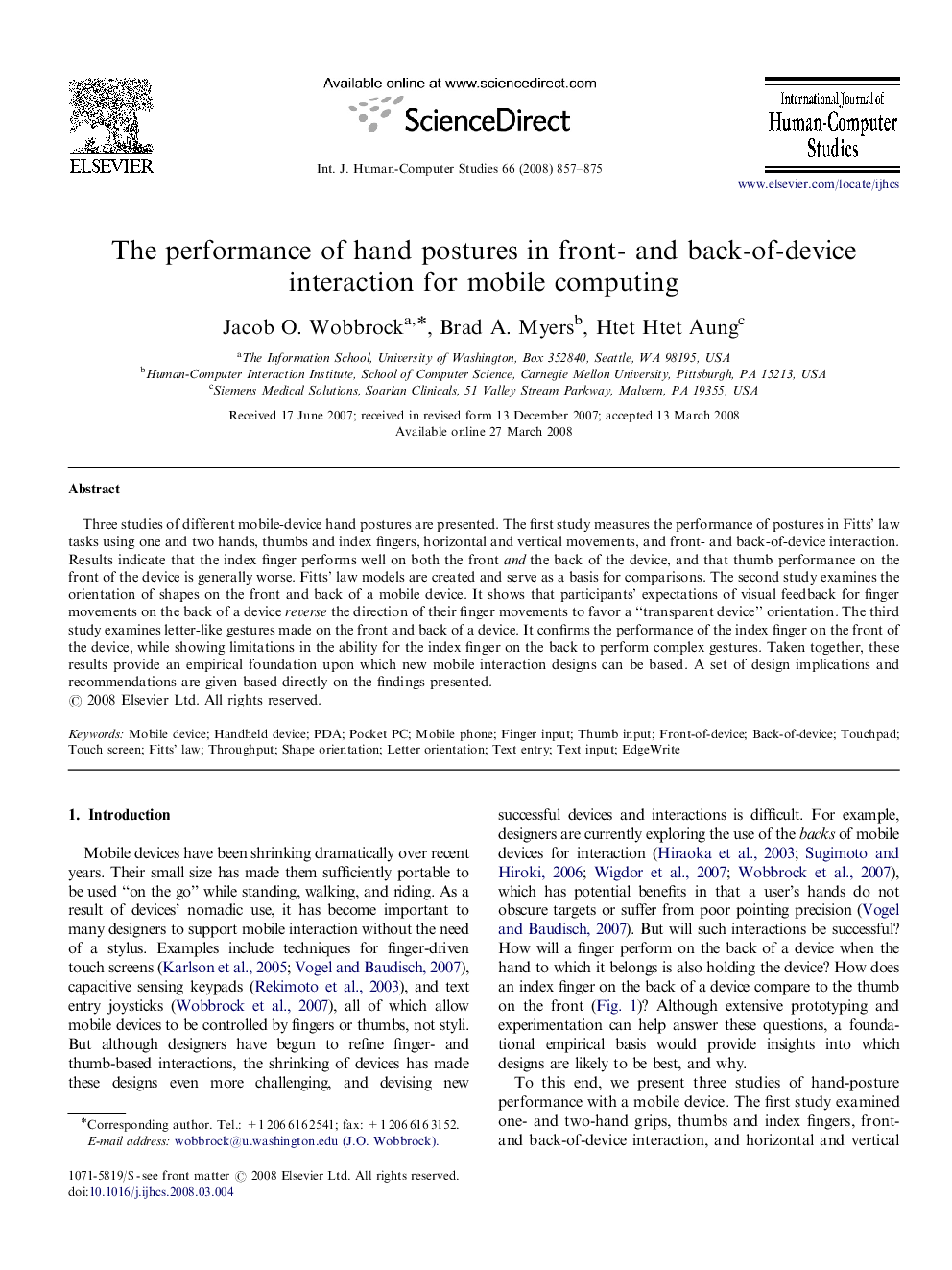| Article ID | Journal | Published Year | Pages | File Type |
|---|---|---|---|---|
| 402074 | International Journal of Human-Computer Studies | 2008 | 19 Pages |
Three studies of different mobile-device hand postures are presented. The first study measures the performance of postures in Fitts’ law tasks using one and two hands, thumbs and index fingers, horizontal and vertical movements, and front- and back-of-device interaction. Results indicate that the index finger performs well on both the front and the back of the device, and that thumb performance on the front of the device is generally worse. Fitts’ law models are created and serve as a basis for comparisons. The second study examines the orientation of shapes on the front and back of a mobile device. It shows that participants’ expectations of visual feedback for finger movements on the back of a device reverse the direction of their finger movements to favor a “transparent device” orientation. The third study examines letter-like gestures made on the front and back of a device. It confirms the performance of the index finger on the front of the device, while showing limitations in the ability for the index finger on the back to perform complex gestures. Taken together, these results provide an empirical foundation upon which new mobile interaction designs can be based. A set of design implications and recommendations are given based directly on the findings presented.
